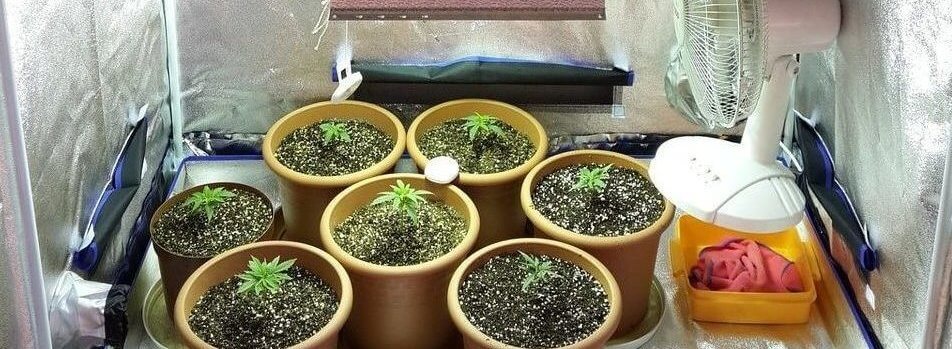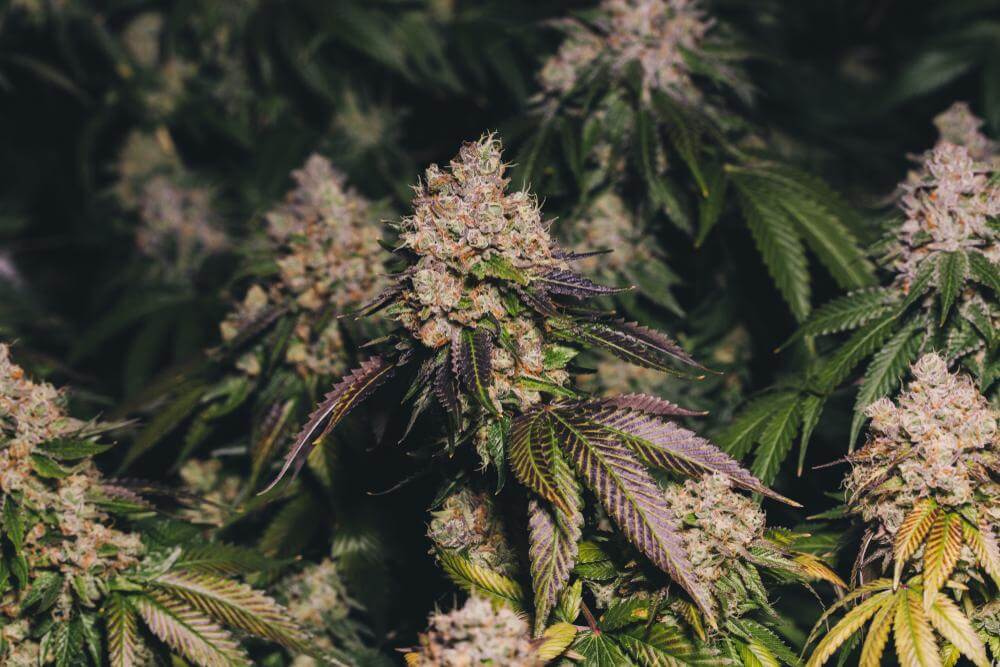DIY Plant Doctor
If you’re like me, you find it more gratifying to reap what you sow. That means you’re finally growing your own weed. Good for you! Now, you need to prepare for pests and mold.
I wish I could tell you that it is just as easy as planting a seed et voilà! I mean, some people could get lucky with perfect growing conditions, but most of us will experience a few bumps in the road, and hopefully, they are only minor.
Here are some of the most common cannabis pests and diseases that might plague your ladies and ways to identify them, deal with them and prevent them. And if you catch them in time, you can save the flock!
We’ll also recommend some great pest and mold-resistant strains to grow that will hopefully help you avoid problems in the first place.
The Most Common Cannabis Pests and Diseases
Let’s get started with the big one to avoid…
Bud Rot
A.K.A. botrytis cinerea. (So, yeah, let’s just call it bud rot.) One of the worst and most detrimental to your crop – you DO NOT want to mess with bud rot!
I remember the first time it happened to me. I ignored it, telling myself that it was something else and it would go away – bad decision. . . It spread.
Why’s it so bad?
Because it is highly recommended to never smoke weed with bud rot – this is black mold and it is toxic for you and your lungs. You may not feel a terrible effect right away, but when mold builds up inside your body, bad things will eventually happen.
Bud rot is common after rain or when your indoor grow has too much humidity. Humidity is inevitable because when you are watering your mature plants so much, that water is bound to be evaporated into the air.
Identify it

One of the first signs of bud rot is the yellow leaves that start to develop. A healthy plant will stay dark green, but when the leaves start to turn color, especially lighten or yellow, that is a good indication that something is wrong.
Upon further inspection, look at your largest colas because bud rot will attack them first. Look for anything strange like moisture or discoloring, especially fuzzy brown spots. This is a clear indication of disease. When you closely inspect your colas, you might notice brown spots that are squishy with a bit of moisture. (Colas are the stems of the plant that hold the buds.)
Deal with it
Cut out the buds that are infected immediately! And be careful to try and not spread the spores. Once even one bud has bud rot, you are at a high risk that the rest of the grow in the same tent or vicinity will be infected too. You should harvest everything right away and inspect your buds closely because you DO NOT want to smoke bud rot.
Prevent it
Keep your buds in dry heat, but not too hot as white powdery mildew can thrive there. Keep your buds around 72-76°F (23-25°C). (Temperature and humidity controllers can help.)
Try to keep track of the weather so as to rescue your plants from the rain, or, if you can’t avoid this, make sure to shake out your buds after a downpour, and if you have access to a fan, this will help to dry them out too. Stagnant water being soaked up by the buds are a feeding ground for mold.
For an indoor grow, make sure to have air circulation by ventilation or multiple fans.
It is important to inspect your plants regularly, especially if you have any suspicions or see discoloring of the leaves.
White Powdery Mildew
White Powdery Mildew (or WPM) is another disease that is toxic to you and your plant. It is quite easy to fix when caught early, but if you leave it alone, it will become a catastrophic plague for your entire crop.
Identify it

When your plants start to develop WPM, as the name suggests, you will see patches of white powder on the leaves. Most commonly, the mildew starts to affect the older and lower leaves first. Though, once your plant is infected, it will start to show up on newer growth.
Keep a lookout for wilting and drooping of the leaves. If you water your plants correctly, this is a clear sign that something is wrong.
Deal with it
The first thing you can do is cut off the affected leaves. Once you start to have even a slight suspicion that your plant might have WPM, cut it off! This is the most effective strategy to apply early on and can save you from a large infestation. Make sure to dispose of the leaves because they will carry spores that will continue to infect your plant.
If a lot of the leaves seem to be infected, you won’t want to cut all of them off because they are the solar panels of your plant’s energy! In this case, you can take a wet paper towel and carefully wipe off the mildew making sure to be careful not to knock any of the leaves. If you move around the leaves, the mildew spores will disperse and you will have an even bigger problem.
For rather severe cases, all might be lost. But you might as well try some natural pesticides just in case you could save your plants. There are three common DIY treatments growers suggest:
- 1 teaspoon Hydrogen Peroxide to 1-liter water
- 2 tablespoons of baking soda mixed with 3 liters of water
- 1-2 teaspoons of Neem per 1 liter of water.
Prevent it
It is easy to prevent WPM – just ensure proper airflow. Ventilation is important in an indoor grow. If you don’t have ventilation, you can use a few fans to create air circulation.
It is also a good idea to keep up with your trimming. Well-trimmed plants prevent leaves from pressing up against each other which otherwise causes moisture and creates the perfect mildew breeding ground.
Spider Mites
These are such a common pest that outside grows are very likely to see them. Some of the most aggressively proliferating and annoying pests, spider mites rapidly procreate in hot, dry environments and thrive in humidity. This proves to be a huge problem for greenhouses and hydroponic indoor grows.
Identify it

You can sometimes see webs forming on the leaves of your plants. Use a microscope to identify tiny white eggs and bodies with eight legs (and usually spotted). If you see a pest on your plants, odds are they are mites.
Deal with it
Plant-based oils. Neem oil is a favorite in the garden and the grow room. This is a natural pest-repellent oil extracted from the plant and works pretty well by suffocating the mites and smothering their eggs. This remedy may not kill every single one of them, but a good portion.
No products found.
If you have a hydroponic grow, you might want to try something that isn’t quite as oily. A mix of cottonseed, rosemary, clove, and garlic oil in equal parts diluted by a water solution of lauric acid, citric acid, and baking soda has a powerful knock-out effect on mites.
Extra Tip: If you are ready to harvest and you notice the mites, one grower has suggested unpotting the whole plant before trimming and turning it upside down so that the mites and their webs fall with gravity and are easier to remove.
Prevent it
Keep your plants healthy. Simple, no?
But seriously, keep your plants healthy and strong so that if an infestation happens, your plants can fight it. If your ladies are stressed by a low-water regime, they will be more likely to die or suffer from a mite infestation.
For an indoor grow, your best way of preventing any pest is being extremely paranoid about cleanliness. You can easily carry mites and pests into your grow room with clothes and shoes – consider having a clean pair of shoes and maybe a pair of scrubs to change into when entering your grow room.
Slugs

A cute insect to encounter on a hiking trail but not so welcome in your grow, slugs are slimy and detrimental to your lady plants. They are herbivores and like to snack on their leaves. Every garden is prone to slug invasions (even indoor ones occasionally), but these pests are better left in the wild than anywhere near your cannabis.
Identify it
With your eyes! Holes in the leaves, slime tracks, and finding slugs chilling in your plants.
Deal with it
Pick them off is one way as slow-moving as the slug pest itself. This can be efficient for a small grow. For a larger grow, you might want to add some nematodes to your soil. Europe loves this strategy and it’s a proven winner.
Prevent it
Besides using nematodes straight away and potting your plants with nematode soil from the beginning, lava rocks will rock your world… and the slugs that try to infiltrate your grow room. These slugs travel along their mucus trail and when the terrain turns into sharp and jagged edges, slugs are put off and aren’t likely to cross the barrier.
No products found.
Strains to Prevent Pests and Mold
If you want to have a better chance at having a smooth grow, sowing a hardy strain from quality seeds will save you a lot of work and headache.
Seed quality is a huge factor in yield size and taste. (For more info on buying seeds online, click here.)
Whereas the strain type contributes to its resilience and your desired effects from use.
Here are our favorite resilient strains for preventing pests and mold.
Durban Poison

A classic 100% sativa, Durban Poison has a sweet licorice taste and is composed of a lower THC content for an energetic high that motivates creativity. This sturdy fem is easy to grow, so she is a great plant for beginners. She is also well-known in the industry for being mold-resistant with a quick turn-around in yield which makes her quite popular among outdoor growers in wet and humid climates.
Super Silver Haze

A cross between Northern Lights, Haze and Skunk, Super Silver Haze is known for its psychedelic and narcotic effects. She is a high-yielding plant but takes a lot longer to mature than other strains. This is usually a problem with mold, but she is quite hardy, resisting mold and disease with proper soil nutrients.
MaryJane Farmer’s Advice
No matter what strain you are growing, cleanliness, proper lighting, controlled temperature and humidity and attention are key to keeping your plants healthy.
I love to have your comments, advice, criticism, and suggestions. Just sign in below. To send photos of your new crop, use electric mail to MaryJane@420Beginner.com. Good growing to you!
Last update on 2023-02-20 / Affiliate links / Images from Amazon Product Advertising API
This product was presentation was made with AAWP plugin.






